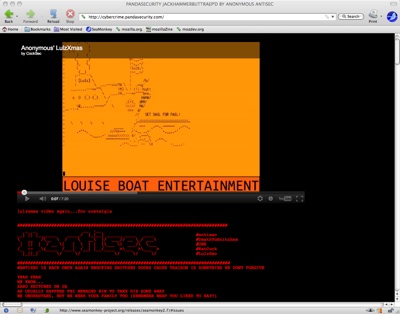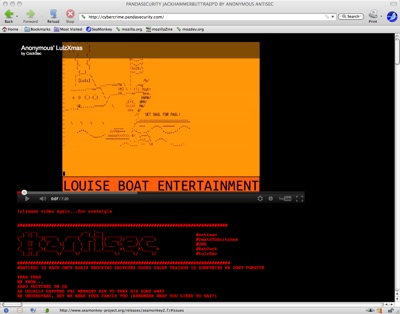Stratfor email hackers were tricked into using Feds’ server
WikiLeaks – and Julian Assange – could get caught up in the investigation into the LulzSec takedown saga because it published the internal emails of Stratfor, the private global intelligence firm that was attacked by Anonymous hackers, it has emerged.
A warrant authorising the arrest of the prime suspect in the Stratfor raid revealed that an FBI supergrass persuaded hackers to use a server controlled by the feds to store the emails.
Whistle-blowing site WikiLeaks began publishing emails from the intelligence biz last month to show “how a private intelligence agency works, and how they target individuals for their corporate and government clients”.
The site refuses to explain how it came by the “Global Intelligence Files” but the dates covered by the emails – from July 2004 to late December 2011 – are consistent with the hacktivists’ ransacking of Stratfor back in December as part of a high-profile and much publicised cyber-assault.
Hackers made off with email spools and credit card information from Stratfor’s insecure systems.
Responding to WikiLeaks’ release, the so-called GIFiles, George Friedman, founder and chief exec of Stratfor, suggested some of the emails might be forgeries while admitting others could be accurate. He alleged that the Anonymous attack was the source of the information:
As most of you know, in December thieves hacked into Stratfor data systems and stole a large number of company emails, as well as private information of Stratfor subscribers and friends. Today WikiLeaks is publishing the emails that were stolen in December. This is a deplorable, unfortunate – and illegal – breach of privacy.
Some of the emails may be forged or altered to include inaccuracies. Some may be authentic. We will not validate either, nor will we explain the thinking that went into them. Having had our property stolen, we will not be victimized twice by submitting to questions about them.
Jeremy Hammond, 27, of Chicago, Illinois, was arrested and charged with access device fraud and hacking offences on Monday night. Hammond, alleged to go by the name of Anarchaos, is suspected of being involved in December’s Anonymous hack on Stratfor. His arrest came after Hector Xavier Monsegur, 28, accused of being LulzSec kingpin Sabu, was outed as an FBI informant since the time of his arrest in New York last June.
Monsegur was instrumental in leading federal investigators to Hammond, a 34-page criminal complaint prepared to authorise a raid on his house reveals.
The 27-year-old trusted Monsegur and, it is alleged, let slip that he had been collared for protesting at the Republican National Convention in New York City in 2004 and an offhand remark that his pals had been arrested at a climate change protest called Midwest Rising earlier this year.
These schoolboy mistakes and others like them allowed disparate online handles to be linked to one identity for investigators to target.
A week-long surveillance operation was then initiated on 28 February that included monitoring of his movements and a tap on his wireless internet connection to log websites Hammond visited. It turned out Hammond frequently went online using the Tor anonymisation service. Meanwhile Monsegur continued to help investigators by noting when Anarchaos went on and offline and correlating it with Hammond’s movements.
Hammond was already on a long list of potential suspects because of his 2005 conviction for hacking into a “politically conservative website and stealing its computer database, including credit card information”. He never made the mistake of revealing his real IP address when he logged into a chat server, the error that reportedly undid Monsegur, but he let slip enough information for the feds to latch onto his alleged identity as an Anonymous hacktivist anyway.
Next page: The days before the Stratfor hack
Article source: http://go.theregister.com/feed/www.theregister.co.uk/2012/03/08/strafor_anon_arrest_analysis/

